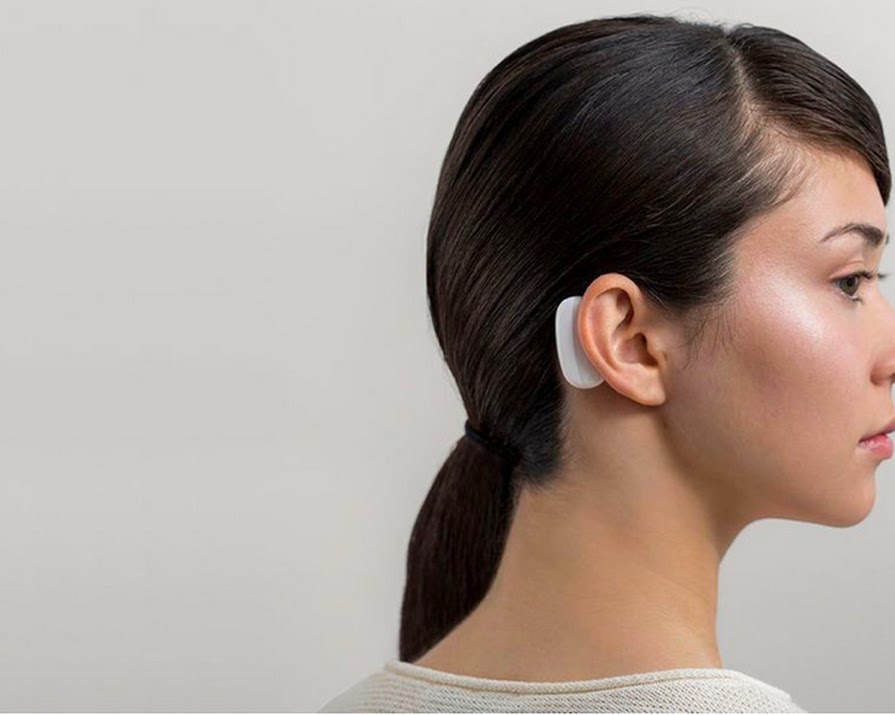
The incredible implications of Elon Musk’s current project which sees brains being merged with computers
By Amanda Cassidy
29th Aug 2020
29th Aug 2020
Advances in the field of artificial intelligence will undoubtedly change our world. But what if futureproofing ourselves meant physically merging with this technology? Amanda Cassidy takes a critical look at how brain-computer interface implants can transform our world…and us.
Alexa, can you solve all my problems?
He has faced growing criticism over his ‘erratic’ behaviour over the years, and it is fair to say that not everybody ‘gets’ what he is doing. But for some, the billionaire Elon Musk’s dedication to the future of humanity has made him the greatest visionary of our century. Famed astrophysicist Neil deGrasse Tyson even has his back.
“Count me as Team Elon …” Tyson said in an interview with CNBC. “He’s the only game in town. He’s the best thing we’ve had since Thomas Edison.”
But it’s only when you fall down the rabbit hole of Musk’s vision that you really start to appreciate the ‘bigger picture’ aim that he has. Workable or not (he has been ridiculed for mistakes he’s made with his electric car company Tesla) you have to admire how far he is prepared to go to ensure the survival of humanity.
Dramatic? Not really, when you look at his current project.

Bugs in the brain
Musk has been working on new technology via his company Neuralink which aims to combine the human brain with computers which would mean we are effectively symbiotic with artificial intelligence. Freaky? Not really when you look at how we are already practically attached to our phones.
This week he unveiled the first “working device” — the earliest version of a brain-machine interface. He believes that so-called BMI devices are essential to keep humans on par with AI by “supplementing our brainpower”. But the current goal is more straightforward; he is creating an implantable device that lets people control phones or computers with their mind.
By strengthing the data link between the information we get from our phones into our brains, (i.e. merging them) we cut out the middle man (spending time Googling something).
How many times have you described someone’s phone as being attached to them like another limb? This technology is also exciting because it would see us effectively become a cyborg human with superhuman cognition. Musk explained recently: “How much smarter are you with a phone or computer or without? You’re vastly smarter, actually. You can answer any question pretty much instantly. You can remember flawlessly. Your phone can remember videos and pictures perfectly.
Cyborg
“Your phone is already an extension of you. You’re already a cyborg. Most people don’t realise you’re already a cyborg. It’s just that the data rate… it’s slow, very slow. It’s like a tiny straw of information flow between your biological self and your digital self. We need to make that tiny straw like a giant river, a huge, big-bandwidth interface.”
Still with me? Horrified? Let’s take a look at why this scenario is not as far-fetched as you might initially imagine.
Firstly, it already exists. Coclear implants are a very crude form of this that make up the basis of this idea. A cochlear implant is a little computer that has a microphone coming out of one end (which sits on the ear) and a wire coming out of the other that connects to an array of electrodes that line the cochlea.
There’s a similar revolution underway in the world of blindness, in the form of the retinal implant. How about deep brain stimulation? It is happening now in the medical world to treat tremors of those with Parkinson’s or reduce the severity of seizures. It is early days for the so-called brain-machine interface industry but that’s all about to change.

Knowledge advancement
Throughout the years, humanity has been building on knowledge passed from one generation to the other — through language, eventually the printing press, and now the internet. The advancement in recent years has led to the ‘jumps’ in knowledge getting faster. (Mobile phones didn’t even exist when we were children and now nearly everyone on the planet has one). So as the advancements get quicker, we get smarter faster and learn more about the world.
Wait But Why is a website founded by Tim Urban and Andrew Finn. They have written in great detail about the topic of brain-machine interface (BMI) after lengthy interviews with Elon Musk and the Neuralink team.
So in a nutshell, as humanity gets smarter, we have to start figuring out how to improve drastically on things like communication and how to stop AI from outsmarting us in a negative way.
They explain: “The more our species began to function like a single organism, with humanity’s collective knowledge tower as its brain and each individual human brain like a nerve or a muscle fiber in its body. This collaboration allowed us to began inventing things no human could have dreamed of inventing on their own — things that would have seemed like absurd science fiction to people only a few generations before.”
So in a nutshell, as humanity gets smarter, we have to start figuring out how to improve drastically on things like communication and how to stop AI from outsmarting us in a negative way. Neuralink is the result of that. Musk has created a group of some of the smartest minds in biotechnology including experts in microfabrication, researchers on biocompatible materials, robotics engineers and neurosurgeons.
This is fascinating mainly because we don’t truly know enough about how our brain works. Neuroengineer Tim Hanson calls it “one of the most information-dense, structured, and self-structuring matter known”.
Our brains operate on 20 watts of power. If you think that an equivalently powerful computer runs on 24 million watts, you can see the potential to harness a lot more information from it. Wait But Why use the example of Professor Jeff Lichtman from Harvard University. He is said to start off his courses by asking his students the question:
“If everything you need to know about the brain is a mile, how far have we walked in this mile?” He says students give answers like three-quarters of a mile, half a mile, a quarter of a mile, etc.—but that he believes the real answer is “about three inches”.
Zooming out
Tim Urban simplifies it: “You know how we totally get how an individual computer sends an email and we totally understand the broad concepts of the internet, like how many people are on it and what the biggest sites are and what the major trends are — but all the stuff in the middle— the inner workings of the internet — are pretty confusing?
“And you know how economists can tell you all about how an individual consumer functions and they can also tell you about the major concepts of macroeconomics and the overarching forces at play — but no one can really tell you all the ins and outs of how the economy works or predict what will happen with the economy next month or next year?
“The brain is kind of like those things. We get the little picture — we know all about how a neuron fires. And we get the big picture — we know how many neurons are in the brain and what the major lobes and structures control and how much energy the whole system uses. But the stuff in between — all that middle stuff about how each part of the brain actually does its thing? Yeah, we don’t get that.”
If you think about it, we do still communicate in pretty basic terms. If you ask me what I thought of a book I was reading, I can use words to describe it to you like ‘funny’ or ‘sad’ or ‘poignant’ but you can’t really imagine fully what I am picturing. That’s why brain-machine interfaces represent such a tantalising new industry. Our brains are our most central tool. Unlocking (and enhancing) some of its potential is pretty exciting in the grand scheme of things.
The challenge
So what can we expect once we enter this new era? Firstly, public skepticism needs to be overcome. Neuralink co-founder Flip Sabes says this came as a surprise to him. “To a scientist, to think about changing the fundamental nature of life — creating viruses, eugenics, etc. — it raises a specter that many biologists find quite worrisome, whereas the neuroscientists that I know, when they think about chips in the brain, it doesn’t seem that foreign, because we already have chips in the brain.
“We have deep brain stimulation to alleviate the symptoms of Parkinson’s Disease, we have early trials of chips to restore vision.”
“To us, it doesn’t seem like that big of a stretch to put devices into the brain to read information out and to read information back in”
“If you think about it, if you told someone you could laser their eyes to fix their eyesight a few years ago they would have left the room screaming. Now 2 million people get Lasik eye surgery every year. The second, very steep uphill challenge is bandwidth. There have never been more than a couple hundred electrodes in a human brain at once.
“In other words, we need to get from low-res to HD in order to communicate on the level we are talking about. The gang over at Neuralink has spoken about needing one million simultaneously recorded neurons. That might sound insurmountable, but early computers had a similar problem if you remember — clunky transistors took up space and were sloooooow (remember the 10 minutes it took to start up your Commodore 64?) until the zippy computer chip was invented.
A new world
The possibilities, if companies like Neuralink pull this off, really are mindblowing. Tim Urban from Wait But Why outlines the vision: “The aim is to produce a brain interface so complete and so biocompatible that it feels as much part of you as your brain does. This flow of information between your brain and the outside world would be so effortless, it would feel similar to the thinking that goes on in your head today.”
“For those, like me, who worry about anyone being able to read your thoughts, fear not. You would have the ability to control what you want to communicate. Like you choose your words now, you would choose which thoughts you wanted to communicate.
“Want to hear what a dog hears? That’s easy. The pitch range we can hear is limited by the dimensions of our cochlea — but pitches out of the ear’s range can be sent straight into our auditory nerve.
“You could also dim or shut off parts of a sense, like pain perhaps. Your brain could have access to all the knowledge in the world, at all times. If you want to know a fact, you could call on the cloud for that info — like Googling something with your brain — and the answer, in text, appears in your mind’s eye. Basically what we all do now except it all happens in our head.”
Augmented reality revolution
But don’t go making tin-foil hats just yet. By the time this shift actually begins to happen, we’ll all be very used to the technology and it will seem normal. The first uses of the technology will be to repair brain injuries or cutting out a cancer to help restore certain cognitive elements.
Obviously, there will be sinister implications in all of this — from hacking to systems failure, more opportunity to spread hateful coalitions, or misuse to influence thought. All new technology inevitably comes with risk, but ultimately it does end up doing more help than harm in the big picture.
Digital correspondent, Andrew Finn says we shouldn’t be too surprised at where this is all leading to. “Computers went from being devices for work and games to windows into a digital world we all became a part of.
“Then phones and computers merged into an everything device that brought the magic out of our homes and put it into our hands. And on our wrists. We’re now in the early stages of a virtual and augmented reality revolution that will wrap the magic around our eyes and ears and bring our whole being into the digital world. You don’t need to be a futurist to see where this is going.”
One of the biggest contributing factors to why Elon Musk set up Neuralink was to give humans a better chance against artificial intelligence. He has concerns about the advances that could be made from AI, that we can’t even imagine.
“We’re going to have the choice of either being left behind and being effectively useless or like a pet — you know, like a house cat or something — or eventually figuring out some way to be symbiotic and merge with AI.”
Then, a second later:
“A house cat’s a good outcome, by the way.”
Redefining what it is to be human
It may be totally bonkers to imagine where this is all going but you have to admire the boldness of the vision and the grandeur of its mission.
Elon Musk’s other companies try to redefine what future humans will do but Neuralink is focusing on redefining what future humans will be. Ultimately, we may not even have a choice but to makes these advances. And as Musk says, somewhat chillingly, in a recent interview “if you can’t beat AI, we’re going to have to join it”.
Image via Neuralink
Read more: Does facial recognition technology mean we have to redefine privacy as we know it?























